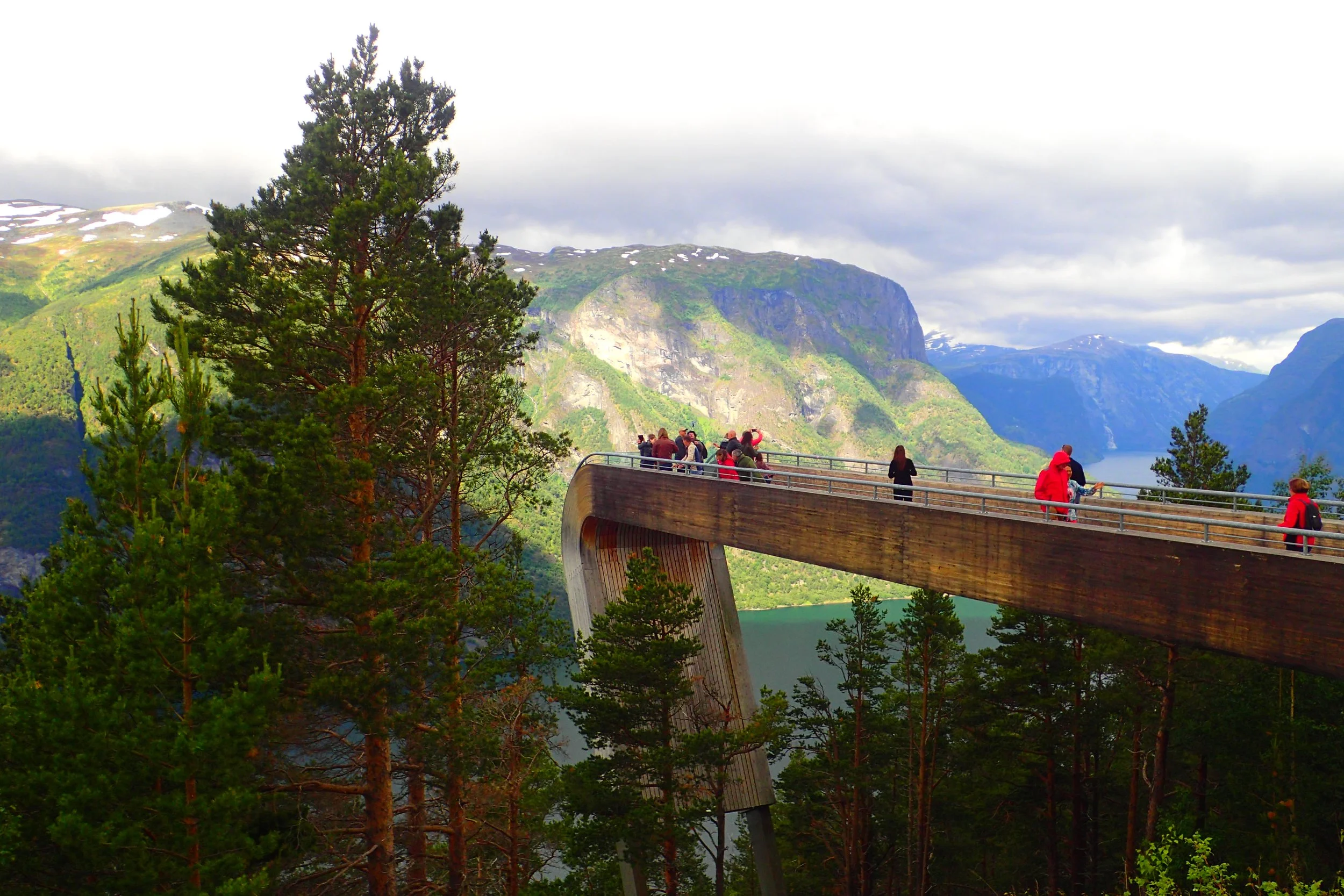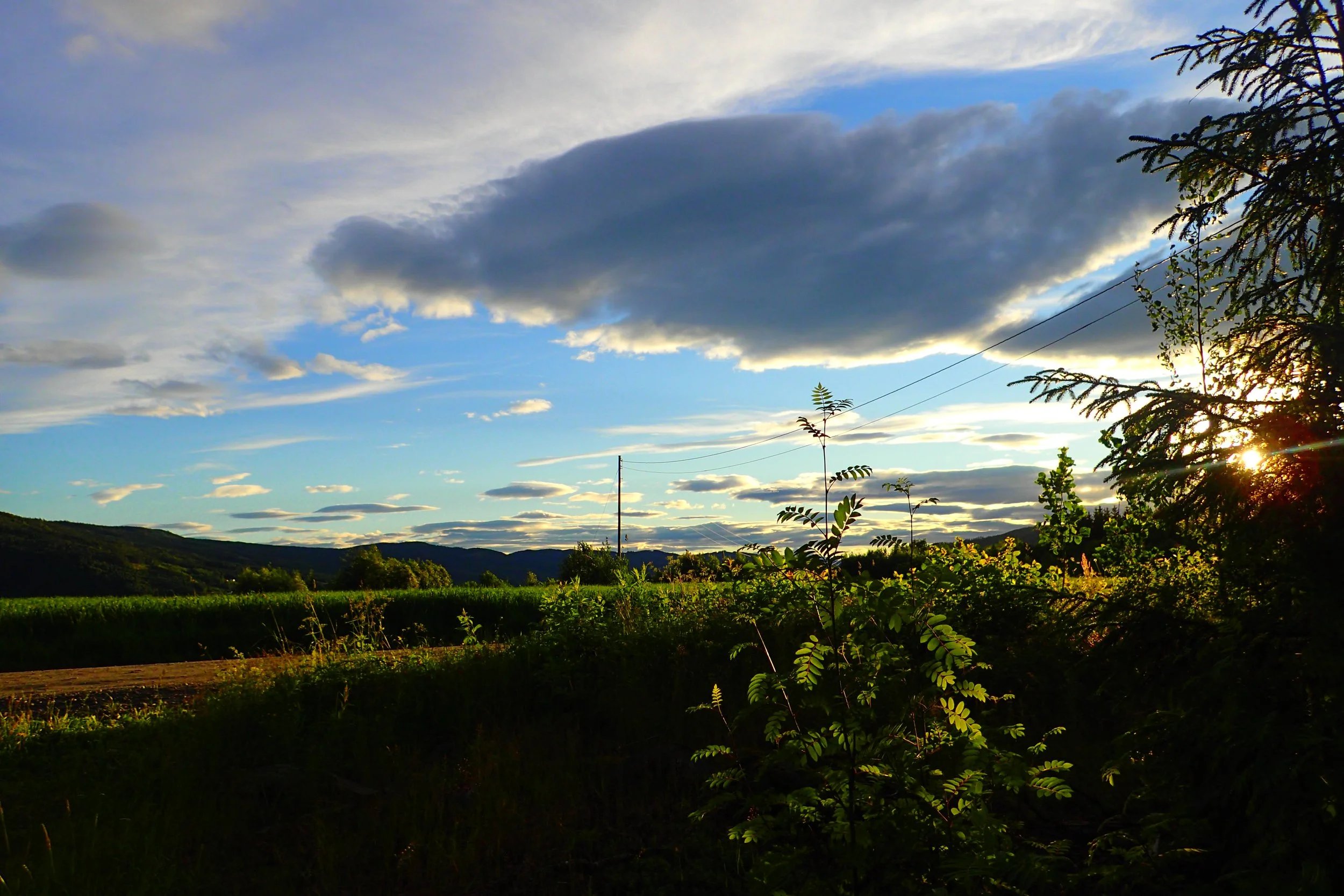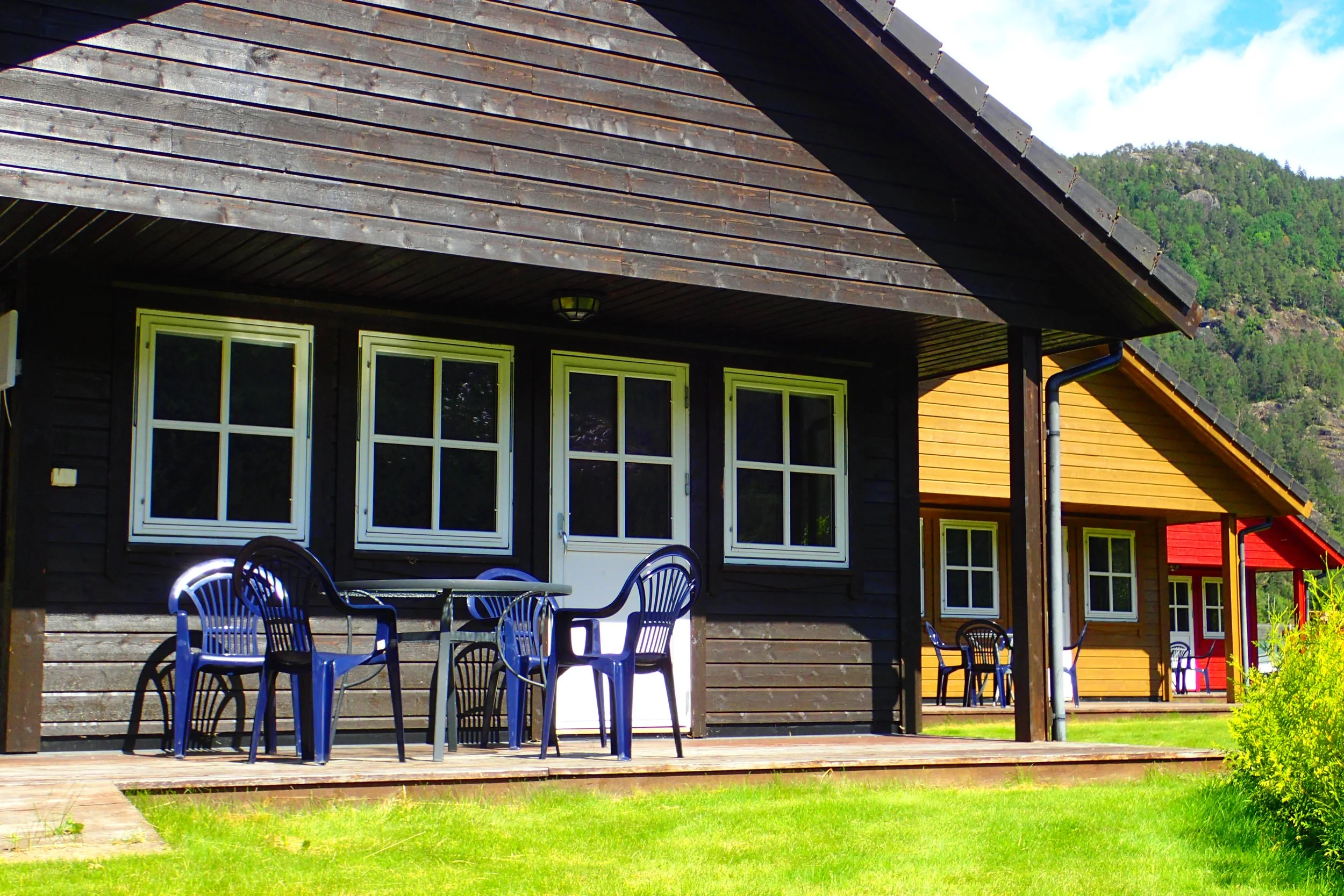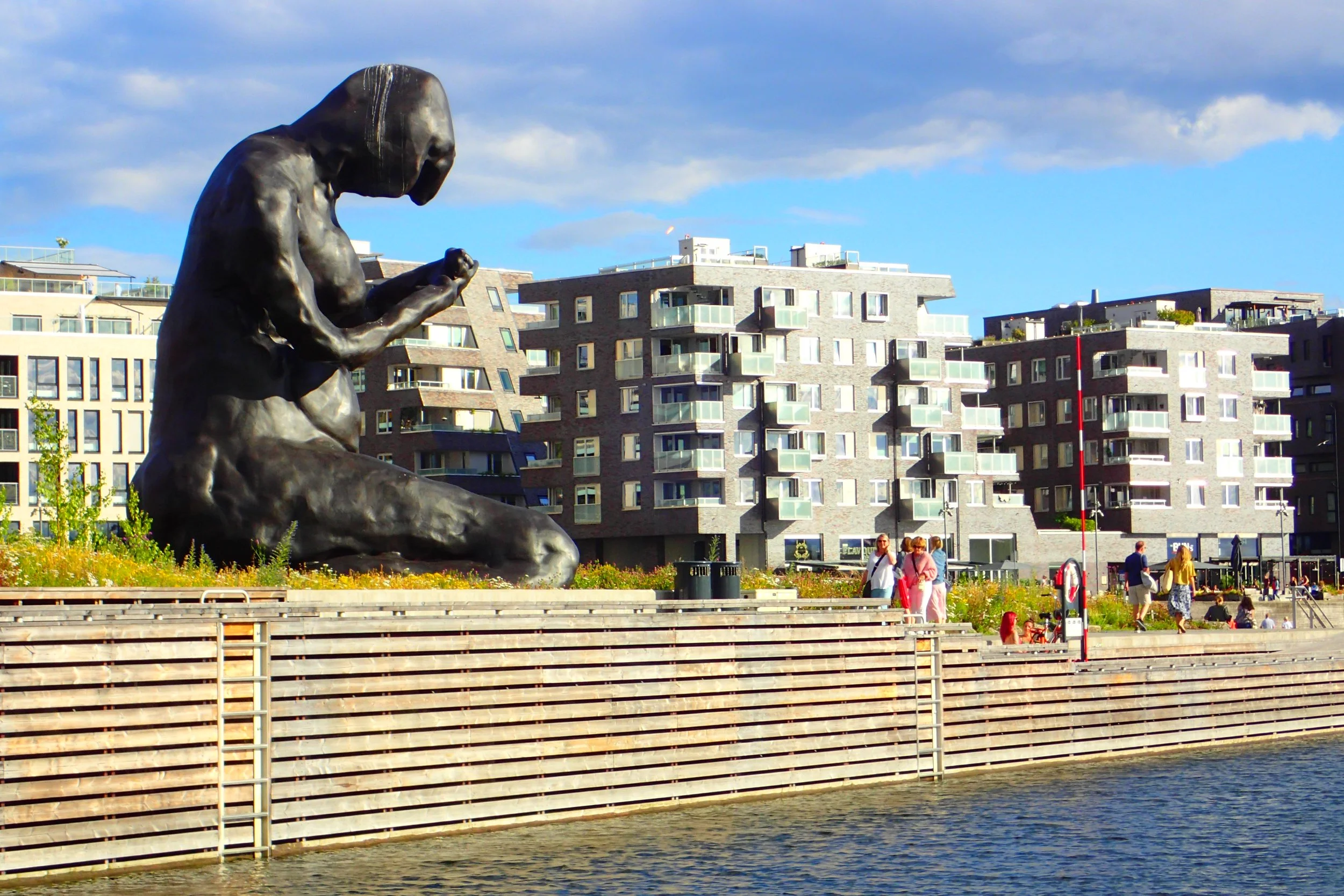We began our road trip into Norway after picking up Carolina's coughing, sniffling child in Stockholm (lol). We were on our way but stopped for a night at a friend's place in Kopparburg, Sweden and at a park before crossing the border north of Oslo.
In this post, I cover the major highlights we saw as we made our way from the Oslo area out to the Bergen area and back over 7 days.
From roadside views with multiple waterfalls to the longest tunnel in the world, Norway is a great country to take a road trip.
1. Camping Views
For the first 2 nights and last night of our trip we were well enough to camp. Camping was our original intention for the duration of the roadtrip. Alas, COVID-19 hit all of us, sending us retreating to 2 different Airbnb stays out near Bergen.
What we did experience of the camping life in Norway was awesome! Norway has a free camping law that allows camping anywhere in the country on "uncultivated land so long as you pitch at least 150 meters from a persons main house. This law is called allemannsretten, meaning "every man's right."
It applies to hiking too and basically covers any kind of "roaming" or camping. Cultivated land means privately owned land, meadows, pastures, gardens, building plots, and industrial sites. Anything else is free to roam.
The biggest challenge was finding locations just off our main route that offered the right conditions. We prefered grass clearings, something somewhat private (not too out in the open), maybe a little sheltered by trees, and far enough away from people's homes. Also a water source and not too many bugs would be best!
When sunset was approaching the first night we managed to find a perfect little nook off a dirt residential road in Odnes, Oppland.
Free camping gave us the opportunity to really immerse ourselves in the local nature and free of other campers. There were beautiful roadside wild flowers here and the tall grassy fields lit up bright green in the golden hour sun.
The only other human interaction we had out there was with the neighbors across the street. They stopped in their car as they were leaving to say hi and check on us. They were very friendly and accepting about our stay and just asked us to be sure we cleaned up after ourselves.
Norwegians were already proving to be as nice as they are rumored to be!
The next night we stayed in a paid camp. We didn't expext to have to do this but it seemed to be the only option in the area. The terrain and the small but densely developed towns made it challenging to find free camping spots with optimal conditions.
The Lunde campground in Aurlandsvangen cost $25 to put up a tent. There were lots of other campers there utilizing different camping syles, from tents and van camping to RVs and cabin stays.
In New Zealand, I mostly avoided pay camping sites but occasionally snuck into them to use their showers and other facilities in the early morning hours. One of the perks of staying in paid camping both in New Zealand and Norway is these extra amenities. This one had a full kitchen and even laundry in addition to restrooms and showers.
Otherwise free camping usually involves walking around while brushing your teeth, squatting in the bushes, and bathing in rivers if you're lucky to have access to one!
Or course, the best part for me were the views. Priceless!
2. Views from the Road
Speaking of views, we were never in short supply while driving around Norway.
Some of these views really popped out or remained constant throughout the trip. They became a normalized part of what we saw out the windows.
Purple Flowers
The first of these typical views were these purple flowers called loosestrife along the sides of the road. Carolina told me they are invasive to the region, both in Sweden and Norway. They sprang up here and there a few years back only to easily spread all over now. I personally loved them!
Regardless, I thought they were pretty. They made this July season in both Sweden and Norway feel very summery and added color to the otherwise mostly green landscape.
Waterfalls
We began spotting many different waterfalls as we reached more hills and mountains in Norway. This immediately made us think back to our time road-tripping Iceland where waterfalls were so numerous.
Velkomen Til Voss
Like Iceland, we made sure to stop at multiple of the named and somewhat more significant ones.
One required a very off-the-beaten-path drive up a backcountry hill to reach it. This was after our first-night free camping and the weather turned drizzly and cool. The views were decent but there were many better waterfalls ahead!
My favorite waterfall was definitely Låtefossen. It’s popular because it is so accessible and because it is a powerful double waterfall that streams into lake Lotevatnet.
There's a little tourist shop next to it selling Norwegian souvenirs. It comes up along Route 13 south of Odda. We parked across the street and then we could walk the bridge in front of it or up the rocks behind the shop for closer views.
Lakes and Mountains
With all these waterfalls, of course the next manor feature of views from the road are the mountains and lakes.
There were so many of these it was nearly impossible to keep track of! So here are some photo highlights of what I saw along the rise to and from the Bergen area.
3. Tunnels
Norway is also well known for its tunnels especially in this region. When driving the fjordlands, what better way is there to navigate the mountains than to go through them?
One of the most popular routes along the way is from Lærdal to Aurland which takes you through the most famous tunnel of all.
Norway is known for having the longest tunnel in the world called Lærdal Tunnel at 24.51 km (15.23 miles). We were delighted to discover that Lærdal and other lengthy tunnels feature a light display at one or multiple points along their length.
The artist behind the display describes it as inspired by the colors at sunset. This psychologically helps drivers with the monotony of the otherwise boring tunnel drives.
We had to get out in the middle of the Lærdal tunnel to mark our moment at its center.
On our way back to Oslo, we loved seeing one tunnel with a 4 way roundabout intersection! These tunnels are incredible feats of human engineering.
4. Stegastein Viewpoint
Another feat of human engineering was a lookout platform near our campground in Aurlandsvangen. Just from the views from the campsite alone I knew this viewpoint was bound to be a showstopper.
I didn't expect how cool the platform itself would be!
This 30-meter structure was built in 2006 and designed by Todd Saunders and Tommie Wilhelmsen. It is 650 meters above Aurland overlooking the Aurlandsfjord and out toward Nærøyfjorden Verdsarvpark. It’s a part of the Norwegian Scenic Routes of Aurlandsfjellet which is one of 18 of the most beautiful road stretches in Norway.
The glass walls and curve downward male this structure feel extremely intimate with the scenery--almost as if you could fall right off.
There is a very curvy, one-laned road up and down the mountain behind Aurland to get to the lookout. Other vehicles should pull to the side to let you pass especially at the wider points in the road!
We loved this spot so much that we decided to linger a while. We also wanted to make the most of our challenging drive up. So we decided to continue up the mountain to see what else we could find.
5. High up in the snow
Google maps showed an interesting area up beyond the Stegastein Lookout.
Along the way, we spotted many sheep and even some cows! Norway is also known for its farms and waiting for sheep to cross the road became a regular experience of roadtripping Norway.
There was already some nice and different scenery along the way. After going through mountains via tunnels, this was the first fjordland mountain of which we were driving to the top!
Eventually, we reached what seemed to be the peak and got out of the car. The temperature dropped significantly now to under 5°C! My layers and thin puffer jacket just barely did the trick to keep me warm.
I couldn't resist a photo with the carved-out snow along the roads. Imagine how deep the snow must get here and how serious the plows must be to blast through it!
I went for a walk across the landscape anywhere because it was July and there was snow!
The ground was frozen and crunchy benesth by sneakers and surorisingly there was some colorful plantlife to observe--green lichens and small magenta-colored flora.
I traversed the otherwise barren landscape to get to the "ledge." But this proved harder to do than I thought. The land here sloped downward instead of taking a sharp edge and it was farther out from the road than I thought.
There was a beautiful valley (of sorts) ahead with sunlight brightening it. I was after a photo of it and managed to achieve capturing it at least somewhat!
On my return to the car, I noticed a bus pull up and cyclists dump out. There are tours from this point where people can cycle from the leak down the road into the fjords.
6. Turf rooftops
Back closer to sea level, all over Norway we consistently saw buildings and homes with traditional turf rooftops.
Common in Scandanavia in the late 19th century, these rooftops are meant to help make log homes more draught-proof=.
I spotted several of them to take photos in the area around our second Airbnb location in Rullestad in Hordaland.
I loved this area. It was really beautiful with views of the lake called Rullestadvatnet. If we were feeling well enough not to Airbnb, I would have loved to use the campground there!
7. Trolltunga Hike
The last highlight is more of a sneak peek at my post for next week. One of the main hikes we came to Norway to do is along the route from Oslo to Bergen. Before reaching Bergen, above the town of Tyssedal is the starting point for the Trolltunga hike.
While there are many hikes to do in the fjordland region, this hike is the most popular for its endpoint, iconic views and natural lookout platform.
But before I spoil too much, that's all I'll say for now. Instead, return in 2 weeks for my coverage of this entire hike and the best way to access it.
In Conclusion
There is so much to see just from your car as you drive across the landscape of southern Norway to the fjord lands. Once reaching the far west, the views and opportunity to experience quintessential Norwegian nature are at their best.
But a planned hike such as Trolltunga definitely needs to be on the itinerary. And with a little coordination, you can make it happen as we did. Tune in next time for the details on this top hike in Norway.







